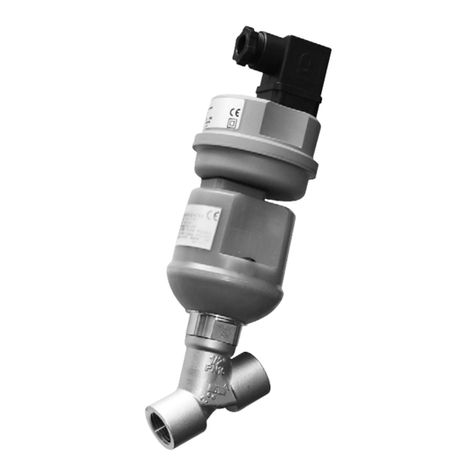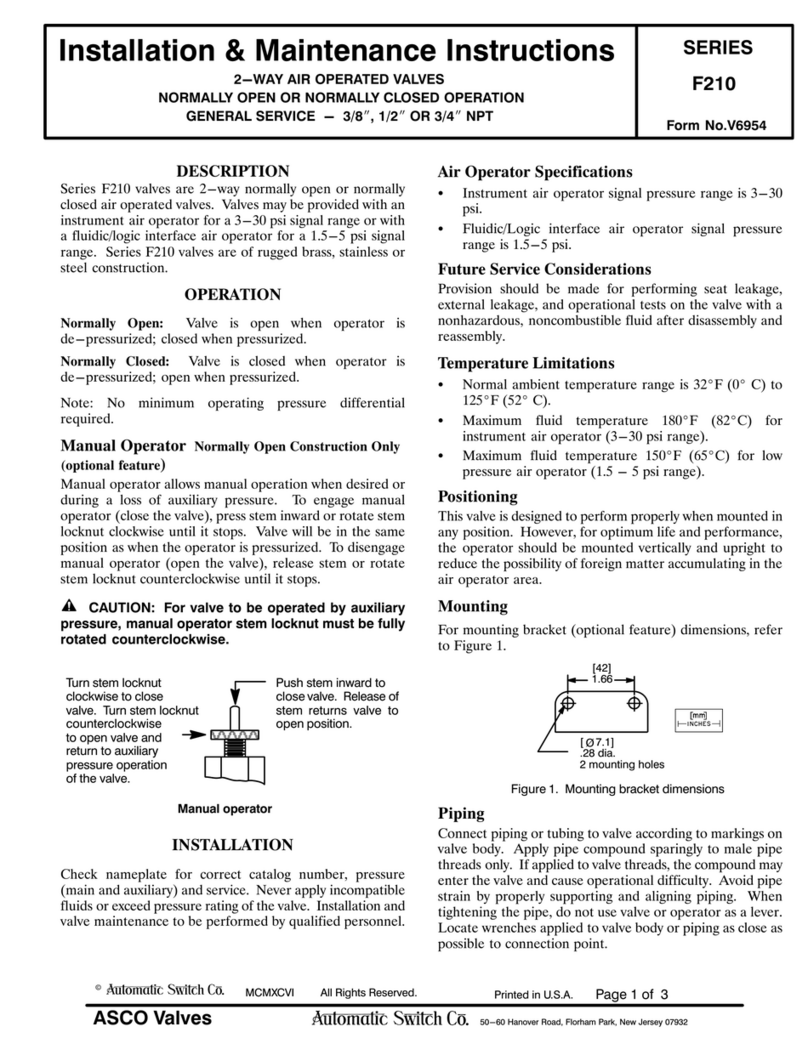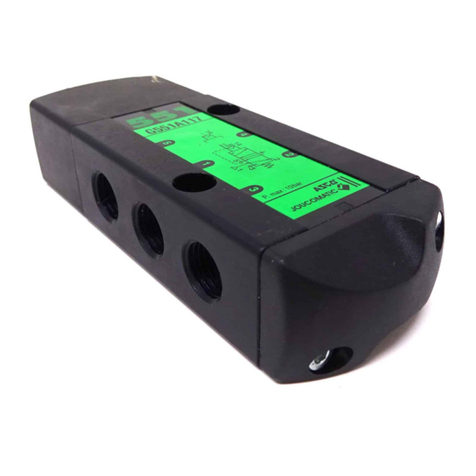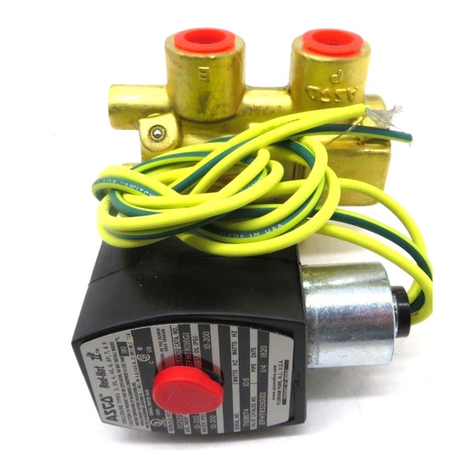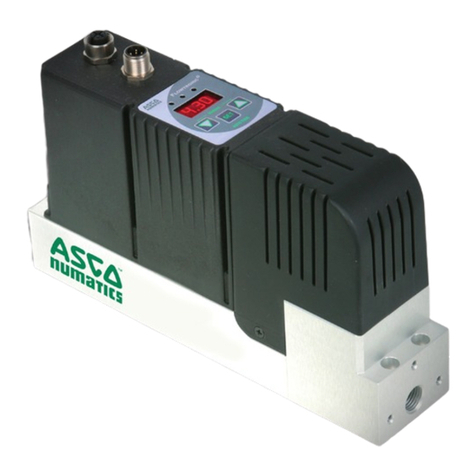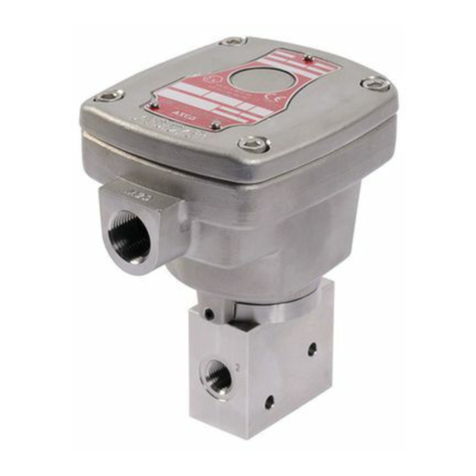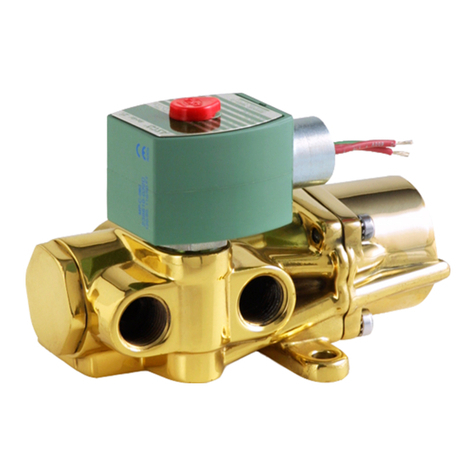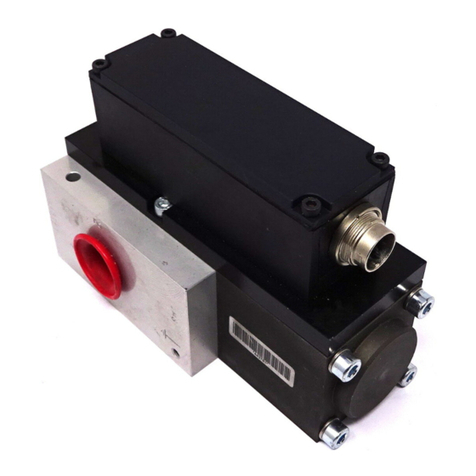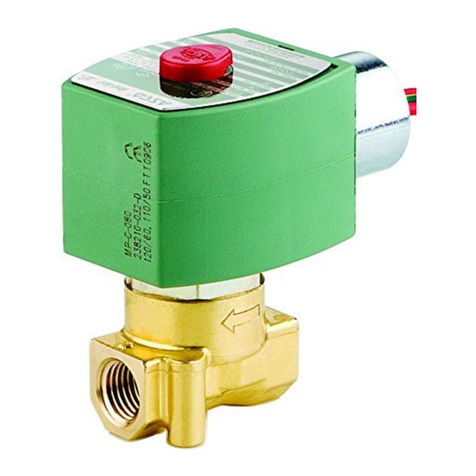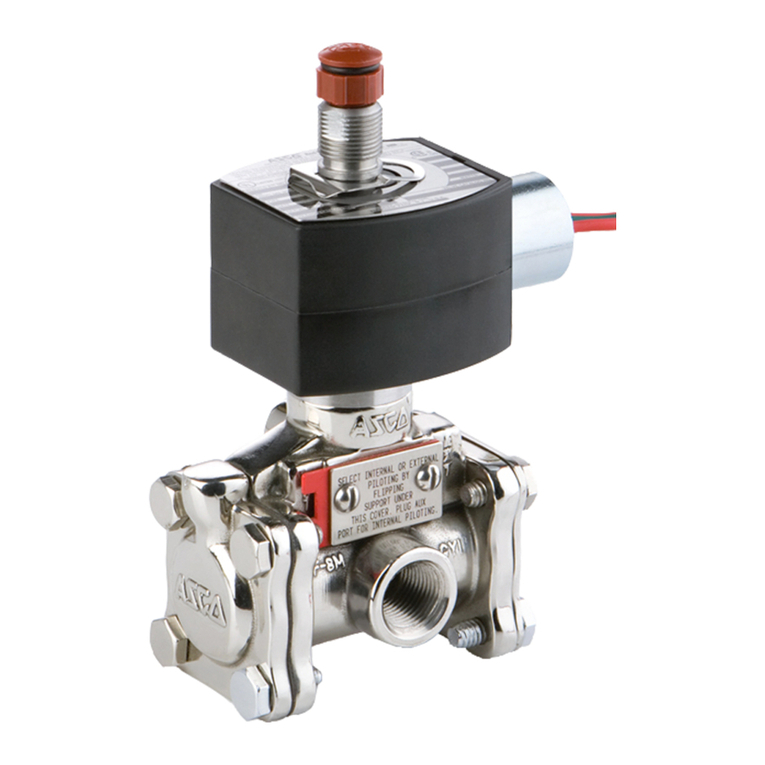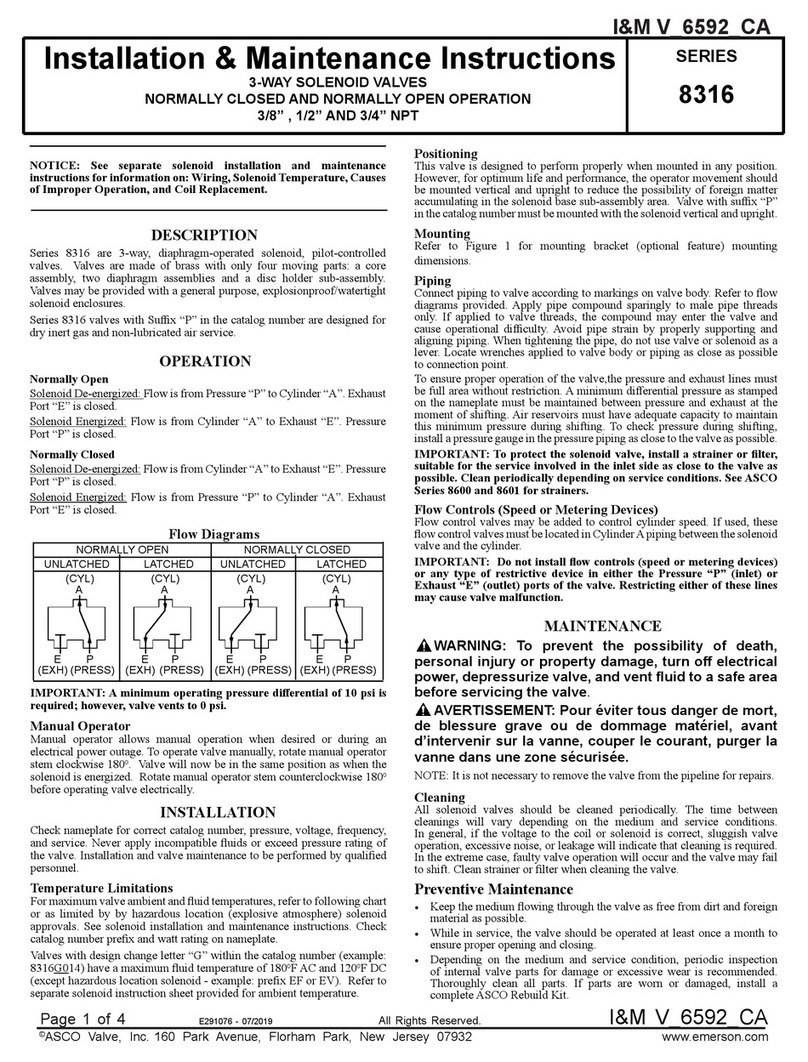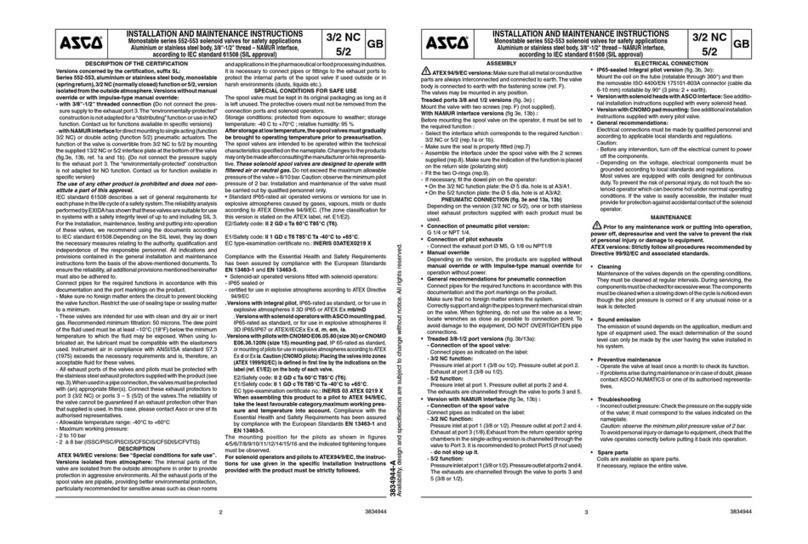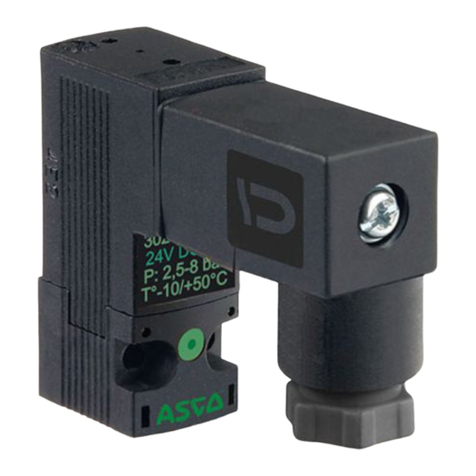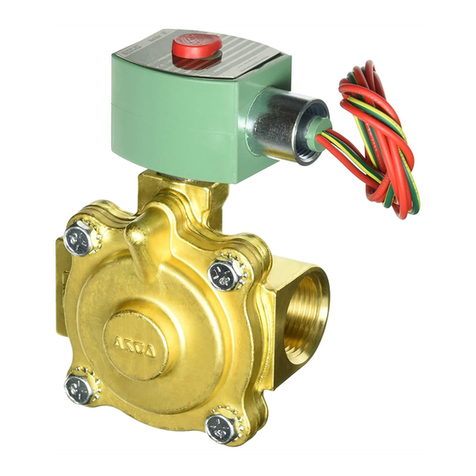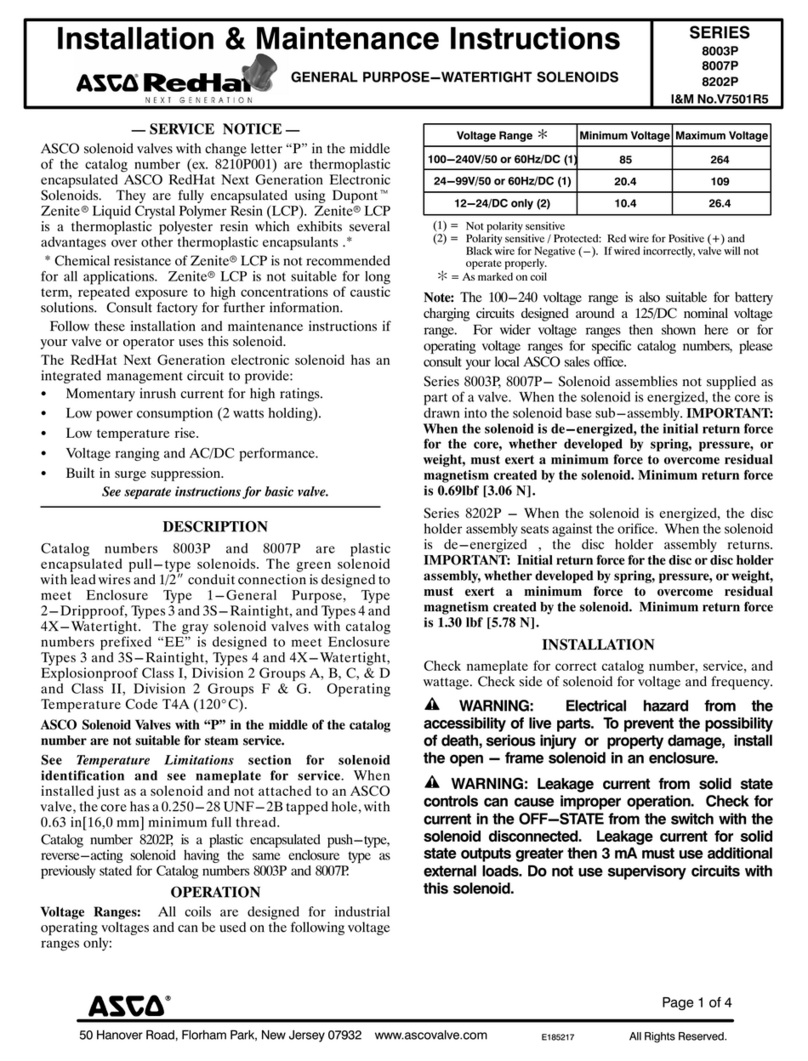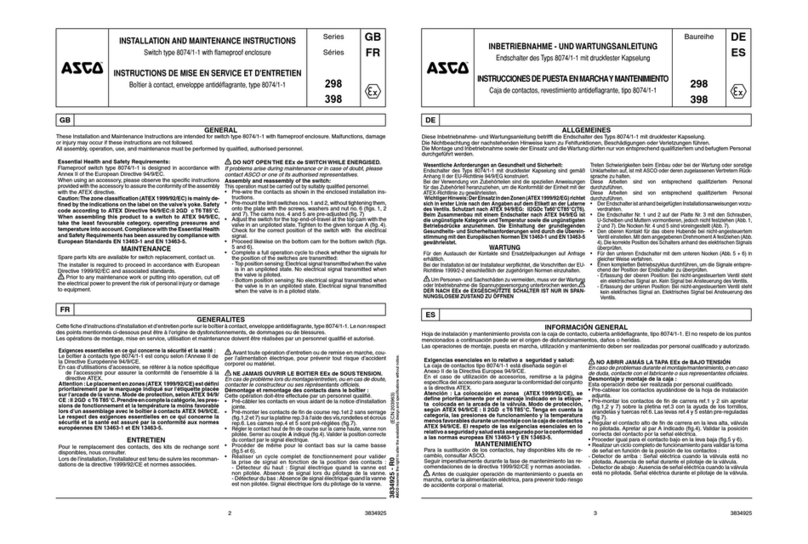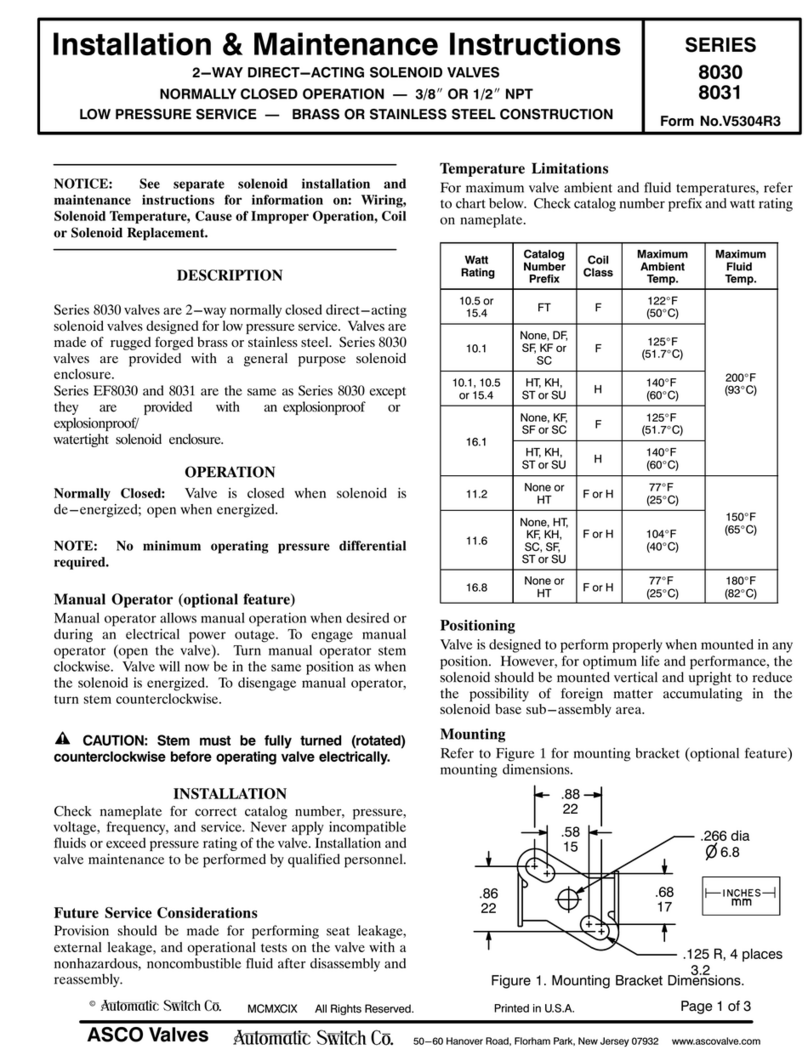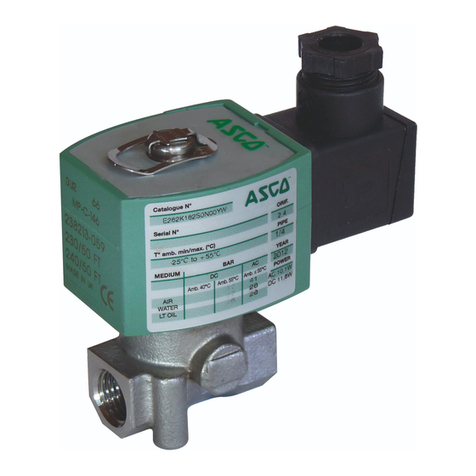
Page 5 of 8 (Section 2 of 2)
50-60 Hanover Road, Florham Park, ew Jersey 07932
ASCO Valves
eMCMXCVII All Rights Reserved. Printed in U.S.A.
Installation & Maintenance Instructions SERIES
2 POSITION, 3-WA AND 4-WA FUNCTION 8401
ADAPTER BASE MOUNTED SOLENOID PILOTED VALVES
FOR KE STONE, NAMUR AND GH-BETTIS AIR ACTUATORS - 1/4I NPT Form No.V6844R2 - Sec. 2
(Section 2 of 2)
NOTICE: See Installation and Maintenance Instructions, Form No.V6844 - Section of 2 for detailed instructions.
Continued from Form No. V6844 - Section 1 of 2
Solenoid Temperature
Series 8401 valves are supplied with coils designed for conĆ
tinuous duty service. When the solenoid is energized for a
long period, the solenoid coil beco es hot and can be
touched with the hand for only an instant. This is a safe opĆ
erating te perature. Any excessive heating will be indiĆ
cated by the s oke and odor of burning coil insulation.
MAINTENANCE
WARNING: To prevent the possibility of
personal injury or property damage, turn off
electrical power, depressurize valve, and
vent fluid to a safe area before servicing the
valve.
NOTE: The entire solenoid valve ust be re oved fro the
actuator for inspecting, cleaning, and/or rebuilding. It is not
necessary to solenoid valve for coil or pilot valve replaceĆ
ent.
Cleaning
All solenoid valves should be cleaned periodically. The ti e
between cleaning will vary depending on the ediu and
service conditions. In general, if the voltage to the coil is corĆ
rect, sluggish valve operation, excessive noise, or leakage
will indicate that cleaning is required. In the extre e case,
faulty valve operation will occur and the valve ay fail to
shift. Clean strainer or filter when cleaning the valve.
Preventive Maintenance
SKeep the ediu flowing through the valve as free fro
dirt and foreign aterial as possible.
SWhile in service, the valve should be operated at least
once a onth to ensure proper operation.
Causes Of Improper Operation
SFaulty Control Circuits: Check the electrical syste s by
energizing the solenoid. A etallic click signifies that the
solenoid is operating. Absence of the click indicates loss
of power supply. Check for loose or blown fuses,
open-circuited or grounded coil, broken lead wires or
splice connections.
SBurned-Out Coil: Check for open-circuited coil.
Replace coil as necessary: see Coil Replacement check
supply voltage; it ust be the sa e as specified on
na eplate.
SLow Voltage: Check voltage across the coil leads. Voltage
ust be at least 85% of na eplating rating.
SIncorrect Pressure: Check valve pressure. Pressure to
valve ust be within range specified on na eplate.
SExcessive Leakage: Disasse ble valve, and install a
co plete ASCO Rebuild Kit and pilot valve.
Coil Replacement
1. Disconnect coil lead wires, then re ove retaining clip or
cap.
2. Slip coil off the plugnut/core tube sub-asse bly.
CAUTION: When retaining clip disengages, it
springs outward.
3. Install new coil and replace retaining clip or cap. Torque
retaining cap to 10 - 12 in-lbs [1,1 - 1,3 N ] with a
21/32I socket.
4. Make electrical hookup; see Wiring section.
Valve Disassembly
5. Disasse ble valve in an orderly fashion. Use exploded
views for identification and place ent of parts.
6. Disconnect coil leads or re ove coil fro solenoid pilot
valve. See Coil Replacement section.
7. Re ove entire valve with flow gasket fro actuator as
follows:
SNamur Actuator - Re ove two socket head cap
screws using a 4 hex key wrench.
SKeystone Actuator - Re ove four socket head cap
screws, one fro each corner using a 5/32I hex key
wrench.
SGH-Bettis Actuator - Re ove four hex head
achine screws, one fro each corner using 5/16I
wrench.
8. Re ove two pilot valve screws, bracket (if present), pilot
valve asse bly, and two pilot valve gaskets fro valve
body.
CAUTION: When removing base screws hold valve
body/adapter base assembly together to prevent
parts from disengaging prematurely.
